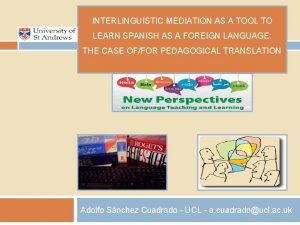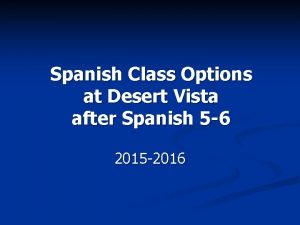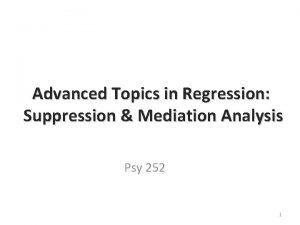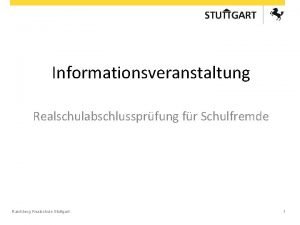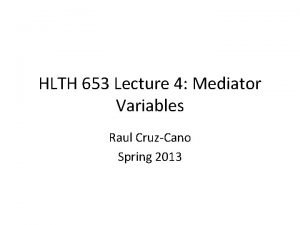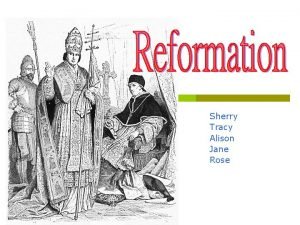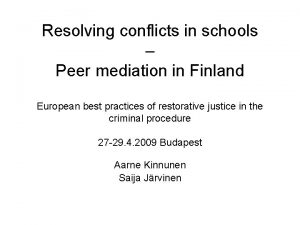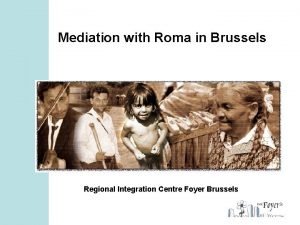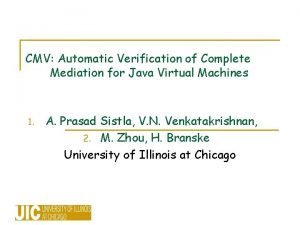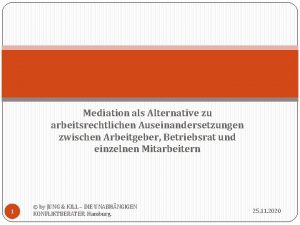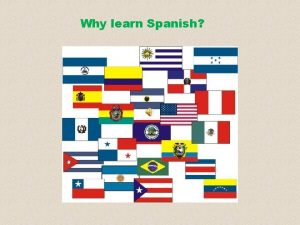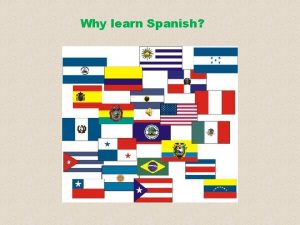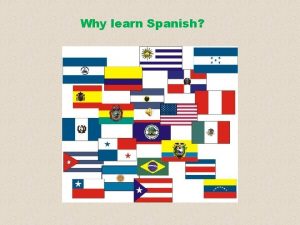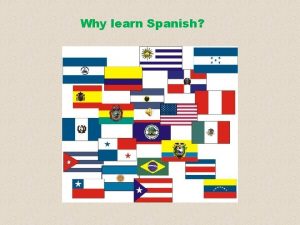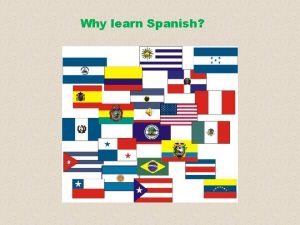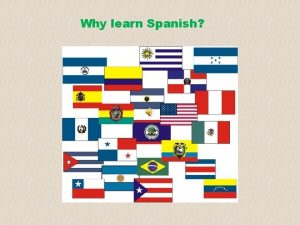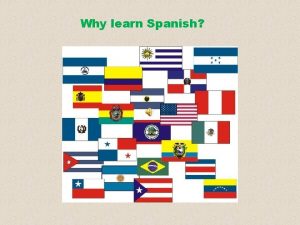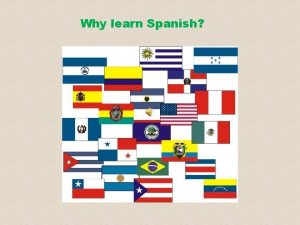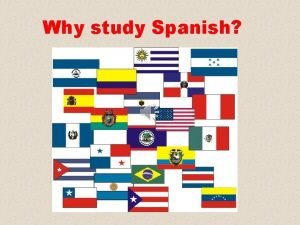INTERLINGUISTIC MEDIATION AS A TOOL TO LEARN SPANISH















- Slides: 15

INTERLINGUISTIC MEDIATION AS A TOOL TO LEARN SPANISH AS A FOREIGN LANGUAGE: THE CASE OF/FOR PEDAGOGICAL TRANSLATION Adolfo Sánchez Cuadrado - UCL - a. cuadrado@ucl. ac. uk

Translation and Language Learning . . . OR RATHER LANGUAGE TEACHING? Grammar-Translation Method Grammar Translation Knowledge Direct Method, Audio-lingual Method, Communicative Method Output in L 2 Interlanguage Intake TRANSLATION

Translation and Language Learning

Why the rejection? Arguments & counter-arguments Epistemological misconceptions LC + RC + OE + WE OM/WM Translation Pedagogy vs Pedagogical Translation Use of L 1 Translation as. . . a communicative activity. . . a text operation. . . a cognitive and communicative strategy

AN SL AT IO N Winds of change TR More recent methodologies GENERATING TASK Output in L 2 Input in L 2 Fo F TI O N Intake LA AN S TRANSLATION TR TR AN S LA TI O N Fo F Interlanguage CEFR (2001, 2017) + Developments in Foreign Language Methodology

Methodology TRANSLATION AS A COMMUNICATIVE ACTIVITY

Methodology TRANSLATION AS A TEXT OPERATION

Methodology TRANSLATION AS A COGNITIVE STRATEGY Sánchez Cuadrado, A. (forthcoming) ‘Uso de imágenes en actividades de traducción pedagógica: el caso contrastivo inglésespañol de la pasiva perifrástica’ in Cadierno, T. , Castañeda, A. e Ibarretxe, I. (eds. ), Lingüística cognitiva y español como lengua extranjera, Series: Routledge Advances in Spanish Language Teaching. Oxford: Editorial Routledge.

Methodology TRANSLATION AS A COMMUNICATIVE STRATEGY Sánchez Cuadrado, A. (forthcoming) Aprendizaje formal de ELE mediante actividades cooperativas de traducción pedagógica con atención a la forma. Colección Monografías. ASELE.

Empirical validation TFM Group TFF Group ELE Group Equivalent pretest starting point Equivalent pedagogical intervention except for the methodological approach: Same conditions: time frame, number of sessions, linguistic aspects. Different goal and methodology: to translate news (TFF /TFM) or to write news (ELE) Samples Immediate learning Pushed output (translating news) Two main research hypotheses validated

Bibliography Alcarazo, N. y N. López (2014), «Aplicaciones didácticas de la traducción pedagógica en la clase de ELE» , red. ELE, n. º 24. Cook, G. (2010), Translation in Language Teaching. Oxford: Oxford University Press. de Arriba García, C. y F. Cantero Serena (2004 a), «Actividades de mediación lingüística para la clase de ELE» , red. ELE, n. º 2. Duff, A. (1989), Translation. Oxford: Oxford University Press. Galindo Merino, Mª Mar (2013), «La lengua materna del aprendiz en el aula de ELE» , en Actas del Encuentro Práctico. Barcelona: International House y la Editorial Difusión. [En línea] Disponible en www. encuentro-practico. com/pdf 3 González-Davis, M. (2007), «Translation: Why the Bad Press? A Natural Activity in an Increasingly Bilingual World» , Humanising Language Teaching, n. º 2. House, J. (2016), Translation as Communication across Languages and Cultures. Oxon, Nueva York: Routledge. Hurtado Albir, A. (1988), «La traducción en la enseñanza comunicativa» , Cable, n. º 1, pp. 42 -45. Kerr, P. (2014), Translation and Own-language Activities. Cambridge: Cambridge University Press. Kumaravadivelu, B. (1994), «The Postmethod Condition: (E)merging Strategies for Second/Foreign Language Teaching» , Tesol Quarterly, vol. 28, n. º 1, pp. 27 -48. Laviosa, S. (2014), Translation and Language Education. Pedagogic approaches explores. Londres y Nueva York: Routledge. Leonardi, V. (2010), The Role of Pedagogical Translation in Second Language Acquisition. From Theory to Practice. Berna: Peter Lang. North B. (2016. ) «Developing CEFR illustrative descriptors of aspects of mediation» , International Online Journal of Education and Teaching (IOJET), 3(2). 132 -140. http: //iojet. org/index. php/IOJET/article/view/125/131 Sánchez Cuadrado, A. (en prensa), Aprendizaje formal de ELE mediante actividades cooperativas de traducción pedagógica. Colección Monografías ASELE. Premio de investigación (Tesis doctoral) 2015. Madrid: ASELE. Sánchez Cuadrado, A. (en prensa), “Uso de imágenes en actividades de traducción pedagógica: el caso contrastivo inglés-español de la pasiva perifrástica” en Cadierno, T. , A. Castañeda, e I. Ibarretxe, (eds. ), Lingüística cognitiva y español como lengua extranjera, Series: Routledge Advances in Spanish Language Teaching. Oxford: Routledge. Trovato, G. (2016) Mediación lingüística y enseñanza de español/LE. Cuadernos de Didáctica del español/LE. Madrid: Arco/Libros-La Muralla.

Interlinguistic Mediation as a Tool to Learn Spanish as a Foreign Language: the Case of/for Pedagogical Translation Adolfo Sánchez Cuadrado - UCL - a. cuadrado@ucl. ac. uk

A look on reality “It is the relationship between own and new language which lies at the heart of encountering a new language, rather than the new language being regarded in isolation, and a better metaphor for what happens should be participation rather than acquisition. Translation would seem to be the prime candidate for fostering a sense of that relationship”. (Pavlenko y Lantolf 2000, in Cook 2010) Adolfo Sánchez Cuadrado - UCL - a. cuadrado@ucl. ac. uk

Hypothesis 1 H 1: Focus on form is as effective when applied in pedagogical translation activities as when applied in language learning activities in terms of immediate intake.

Hypothesis 2 H 2: Translation activities with a focus on form are more effective than translation activities without a focus on form when preparing for pushed output (translation).
 Interlinguistic mediation
Interlinguistic mediation Kinesthetic imagery
Kinesthetic imagery What language to learn after spanish
What language to learn after spanish Mediation
Mediation Billing data mediation
Billing data mediation Mediation hypothesis example
Mediation hypothesis example Eurokom mediation
Eurokom mediation Mediation examples
Mediation examples Tracy allison mediation
Tracy allison mediation Mediation
Mediation Peer mediation definition
Peer mediation definition Family mediation brussels
Family mediation brussels What is incomplete mediation
What is incomplete mediation Complete mediation example
Complete mediation example Imi mediation
Imi mediation Mediation betriebsrat arbeitgeber
Mediation betriebsrat arbeitgeber
